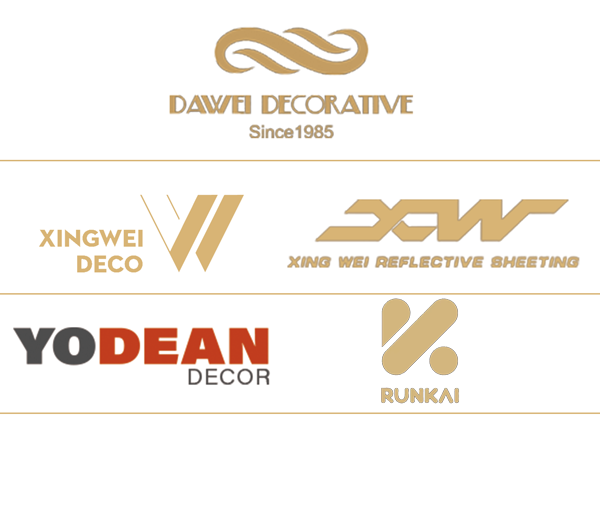When it comes to designing your interior space, one of the most important things you will need to consider is whether or not you want to use decorative wall panels in your room. There are a lot of different types of paneling that you can choose from, so it’s important to make sure that the one you choose will not be ruined by humidity.
Wood
Decorative wood panels are a great way to add style to your home. They are easy to install, versatile, and affordable. Wood wall decor is also a great option because it can add warmth to a room. If you are looking for a new look, then wooden panels might be what you need.
Decorative wood panels come in different thicknesses and colors, so you can choose one that suits your room. Various edge finishes can also be applied. You can use decorative panels to create a fake ceiling or cover a section of a wall. Decorative panels can be used to create a unique pattern on the wall or to hide wires and cables. These are some of the most functional and useful wall panels available today.
Modern wood wall paneling is designed to be easy to install and maintain. It is also moisture-resistant, impact-resistant, and durable. This makes it ideal for high-traffic areas. While it is not as strong as drywall, it is less expensive and can easily be painted to match your existing decor.
Wooden decorative wall panels are also a great choice for high-humidity rooms such as a bathroom or swimming pool. In fact, they can absorb excess humidity and provide thermal inertia. Panels are also available in acoustic varieties to minimize sound in the building. Acoustic decorative wood panels are custom-made for specific interior design solutions.
The best part of using these panels is that they are non-toxic. Also, they are eco-friendly. Wood is a renewable resource that can be recycled into new products, making them a sustainable solution to your decorating needs.
One of the most common uses for decorative panels is to cover a section of a wall or hide wiring and cables. Wall panels can also be installed on an entire wall, creating an eye-catching focal point. As with any decorative material, the optimum way to apply it is to acclimate the material in the room before installation.
Decorative wood panels are also a great way to increase the insulation of your building. By installing panels with mineral wool, they can absorb more heat and reduce the occurrence of condensation. This is especially important in rooms that feel closed in. For example, a bedroom or kitchen.
Decorative wood panels are a great alternative to drywall and are easy to install. However, they do require special treatment before being installed. First, you should wipe off any dirt and debris on the walls. Secondly, you should apply a primer.
Lastly, you should sand the walls to ensure a good grip. Using quality paint is also a good idea. Ideally, you should be able to do this by hand, but you may need to use a power sander.
MDF
The best way to ensure your home is always dry and hygienic is to use moisture-resistant MDF decorative wall panels. Moisture-resistant MDF is made from moisture-repellent resin and is easier to work with than standard MDF. For interior applications, it takes well to most adhesives and paints. In high-humidity areas, it is essential to install MDF that is waterproof.
Despite its moisture-resistant qualities, however, this material can swell and warp when it comes into contact with water. It is important to make sure that your walls have a 3/8-inch gap to accommodate expansion. This allows for the walls to expand without collapsing. Water-based polyurethane may not adhere to MDF surfaces, so a separate coating must be used to protect the panels.
You can also add a decorative laminate to your MDF panels to match your existing decor. Laminates are available in a variety of colors and styles to complement your home. They can be a great option if you want a warm look for your space.
If you prefer a more traditional look for your room, you can choose solid wood for your walls. Solid wood has a natural grain, which gives it great structural strength. However, it is more expensive than other options. Also, it can splinter due to natural knots. So if you’re working with a tight budget, you can opt for plywood instead.
Medium-density fibreboard, or MDF, is a popular composite material for decorative walls. Unlike wood, MDF is free of grain patterns. And, it’s a very flexible panel board. It’s also resistant to moisture and heat. Decorative MDF is available in a wide range of colors and finishes, from smooth and textured to veneer.
Besides its aesthetic appeal, MDF is also a good choice for home furnishing projects. This wood product is versatile, durable, and easy to work with. Paneling is an inexpensive alternative to wallpaper and tiles and is also an effective way to add architectural interest to your walls.
Whether you’re looking to update an old room or create a new one, MDF wall panels are the best choice. The fine, consistent material is ideal for covering uneven or not-so-perfect surfaces. Depending on the finish, you can choose from a range of colors, textures, and designs. These panels can blend easily with other design elements to create a beautiful effect.
Wall paneling is a convenient solution if you have a space that’s not quite ready for a full paint job. You can also make a warm and inviting space by combining MDF paneling with other surface decoration materials, such as tiles or wallpaper. Your choice of color and style will depend on your taste and the design of your room.
The best way to install MDF is to use a bespoke wall panel system that includes an engineered attachment framework system. These products are designed for fuss-free, low-maintenance installation and will give your room a sleek look.
Beadboard
If your room has high humidity, you may want to consider adding beadboard decorative wall panels. These panels are easy to install and come in many styles. They are also useful for a number of different rooms.
The first step to installing a beadboard is to determine your ceiling height. Typically, the height of wainscoting is determined by the rule of thirds. You will need to measure the length of your room, including the ceiling, to find the ideal height. You can use a stud finder to locate the studs on your wall.
Once you’ve determined the height, you’ll need to remove any existing baseboards and outlets. To do this, you’ll need a prybar and a utility knife. Remove any existing light switch covers and outlet covers. Before hanging your paneling, repair any holes in the upper part of the wall.
Next, you’ll need to remove the paint from the reused baseboards. Make sure that you score the paint with a utility knife to prevent it from peeling off. When you’re finished, you’ll have a piece of wood that you can paint to match the color of the beadboard.
If you’re installing a traditional beadboard, it will likely come in natural or stained colors. These options will give your home a warm, natural feel. However, if you aren’t sure what you’re looking for, you can always try painting the beadboard a color that complements your decor. Light blue or pale pink are good choices.
You can then attach your beadboard to the wall with construction adhesive. If your beadboard is not level, you can shim it. This will create an even surface. For a smooth finish, you’ll want to paint your beadboard with water-based latex paint. Water-based paints will wash away with water, while oil-based paints are better for interior walls.
Beadboard can be a tricky material to remove. This is because you’ll need to carefully fill the nail holes and caulk any gaps that may occur. Depending on the type of beadboard, you may have to use nails that are strong enough to support your weight plus additional loads.
If you have a textured ceiling, such as popcorn, you should make sure that your beadboard panels are made of material that can stand up to high temperatures. Also, make sure that you seal any beams in your home to prevent deterioration.
In addition to being an attractive and durable addition to your home, beadboard decorative wall panels can add character and style to your room. They are a great way to create a unique look and cover up any flaws on your walls.
You can purchase beadboard in large sheets. Many people prefer to buy this option because it’s more convenient. But you’ll need to know how to trim the beadboard to fit your space.





Thank you for sharing about decorative panels . Your blog post was informative, engaging, and inspiring. Keep up the amazing work and continue to spread joy and creativity through your writing!